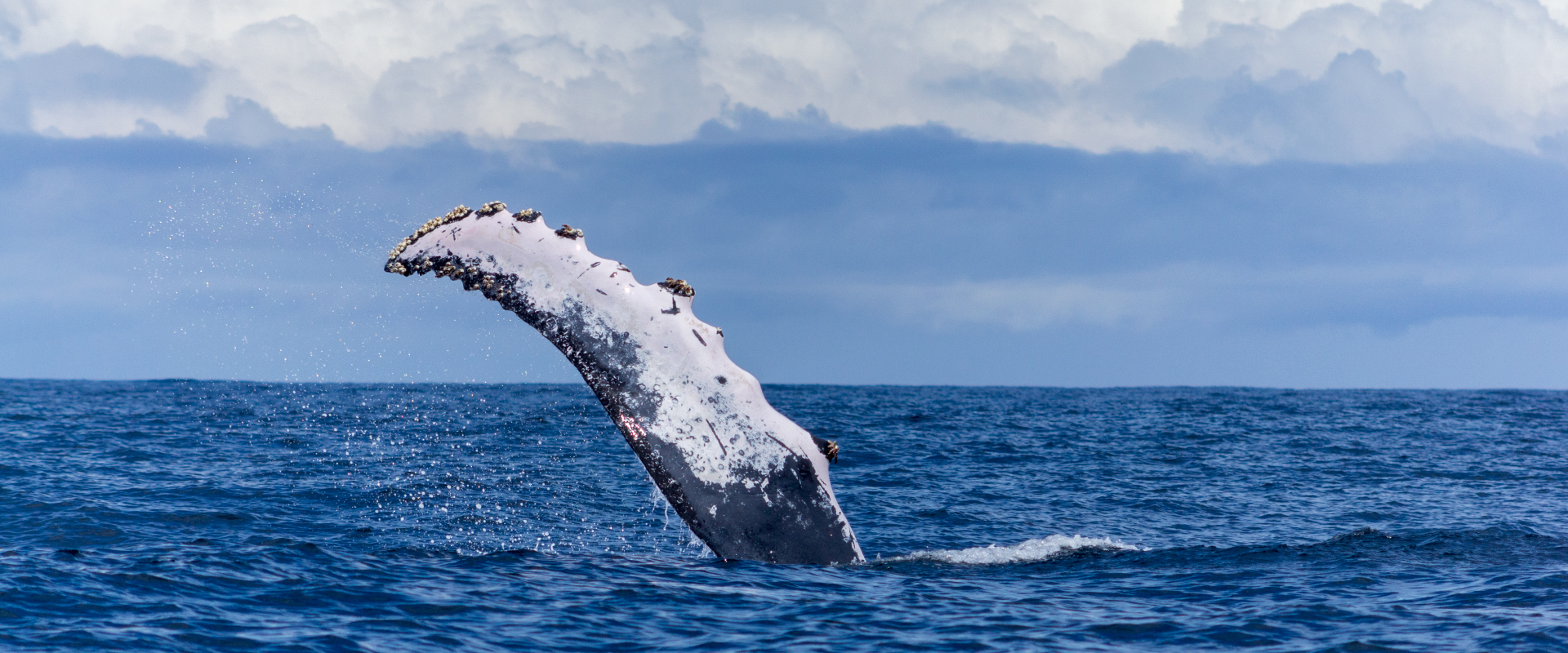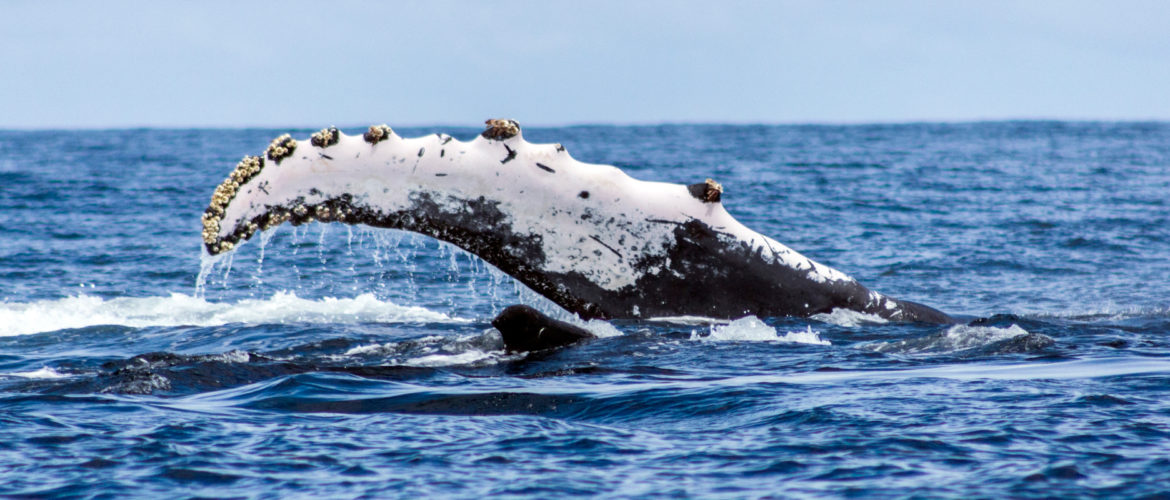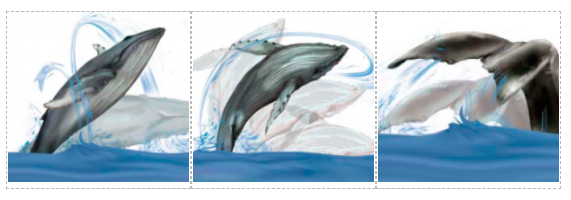What is Whale Watching:
What is whale watching? It is the activity that, either from land or from a vessel, allows travelers and researchers to appreciate some physical traits and movements that are part of the behavior of humpback whales. These whales arrive each year in the waters of the Colombian Pacific to fulfill functions of mating, birthing, and nurturing.
Although humpback whales swim in all the oceans of the world, when it comes to whale watching, different aspects arise that influence their presence in the Colombian Pacific Ocean. Water quality, depth, and temperature, as well as the tranquility of the area determined by wind characteristics and the presence of vessels, all play a role.
Whale watching activity is often fortuitous and requires the patience of travelers and operators. This is because the objective is not always achieved when a trip to see them is scheduled. Here, climatic or behavioral factors due to imprudence by individuals come into play. Although it is possible to see them throughout the day, it is more feasible to do so when the sea is calm or when the intensity of the sunlight decreases, especially in the early morning or late afternoon.

Responsible Whale Watching:
While humpback whale watching is one of the most exciting moments, it is important to consider that there are legal regulations that control this activity and minimum behavioral rules that must be followed by travelers, operators, and boat drivers. Although whales do not attack humans but rather try to avoid them, a whale watching trip where imprudences are committed could leave less than pleasant memories. It is important that, despite the excitement of observing these immense cetaceans, people do not engage in actions that disturb, unsettle, or cause them to make movements that result in accidents.
For Boat Drivers: It is their duty to adhere to the provisions of the Maritime Authority regarding the requirements for departure and the maneuvers to be carried out when whales are observed:
In any case, they should not approach closer than 200 meters to the whale. When they are 300 meters or less, they should navigate at a slow speed without exceeding that of the whale’s swimming. Or, alternatively, the engine should be in neutral. They may approach parallel to the whale, slightly from behind, and position themselves ahead without obstructing its passage, allowing it to approach. Direct approaches from the front and rear are threatening to humpbacks. They should avoid abrupt changes in speed and direction. Do not approach a mother with her calf. If they do, it is advisable to move away at low speed and without producing waves. If the whales are jumping or performing any behavioral maneuver, they should move away as they require space. Approaching more than allowed could cause accidents. Operators of large vessels must stay 2 km away when observing researchers making recordings. The withdrawal from whales must be done slowly without causing waves.
For Travelers: The visit of humpback whales to Colombia is a majestic and unforgettable natural event. Therefore, it is important for travelers to manage their emotions and maintain prudent behavior when going out for whale watching. Here are some recommendations:
Know the rules governing vessels and ensure that the operators comply with them. Do not attempt to disperse whale groups. Also, do not feed them or throw waste or garbage into the sea. If swimming and accidentally encountering a whale, move away as soon as possible. Try to remain silent, loud noises bother them. Look towards the sea and be attentive to blows or movements of the whales.
Seasons:
The whale season in Colombia starts in July and extends until late November. Some individuals even stay for the first days of December. The arrival of humpbacks is gradual, meaning they do not all arrive at the same time and generally do not stay in the same place. Some groups return to the Ecuadorian Pacific, while others go up to Panama and Costa Rica. It is common for males to return to southern Chile and Antarctica soon after mating. It is rare to see young individuals in Colombia, as they have no additional needs besides feeding. When whales give birth to their calves, they stay for four months so that the calves can feed on their milk to gain the necessary size to undertake the long journey back to the southernmost region of the world.
Observing from the Sea:
The plan to see whales from a boat is more in demand than watching from the coast. This is because there is the possibility of following them to appreciate their swimming and behaviors, provided, of course, that the established rules for cetacean watching are respected. It is important to note that various types of whale groups can be observed: those of mothers with their calves, groups in courtship, and singers.
In any case, it is essential to maintain the distance limit and assume a respectful attitude, especially when it comes to the mother and her calf, as they are a vulnerable group that requires complete calm. Pressuring them could cause their separation, endangering the life of the calf. It is worth noting that, even during the season, the plan to see whales requires considerable patience since several factors related to weather conditions and the discipline that tourists and operators must maintain to ensure the tranquility of the humpbacks are involved. Due to the movement of the sea, the use of binoculars is not recommended as this action often causes seasickness.
Equipment for Observation and What to Bring:
Although rain and fog are factors that can disrupt whale watching, it is important to consider that the Colombian Pacific region is highly rainy. For this reason, it is essential to bring waterproof layers and plastic bags, preferably with airtight seals to protect documents and personal belongings, cameras, and electronic equipment.
Recommendations:
- Regardless of the weather conditions, here are some recommendations for whale watching:
- Wear a cap to protect against sun rays.
- Always wear a life jacket.
- Bring binoculars if you want to observe from the coast.
- Use sunglasses with UV protection.
- Use sunscreen. Have provisions of hydrating drinks and light food
- Essential a bag for collecting garbage.
- Waterproof bag to protect belongings.
- A good camera, preferably with zoom lens for close-up shots.
- Non-slip sneakers for good grip inside the boat.
- Motion sickness pills.
- Optionally, bring a GPS to identify movement routes.
Behavior and games of whales:
The needs for mating and breeding determine the behavior of humpback whales in breeding areas. Although mating has not been observed, various aerial movements associated with play, excitement, courtship, and aggression between males competing for females have been identified. Such actions by calves and adults include, among others, jumps, headbutts, and tail slaps characterized by being observable. For the same reason, the behaviors of humpbacks are striking and of high visual and acoustic impact.



